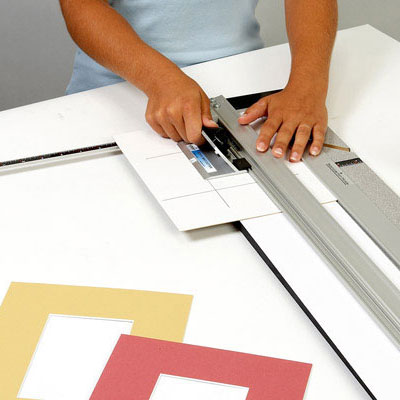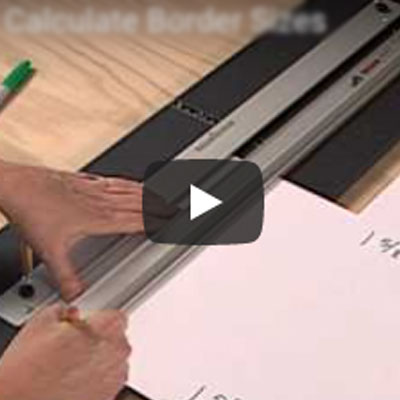- Making the Most of a 32 x 40 Sheet
- Trimming Mat Board to Size
- Trimming Mat Board to Size with Straight Edge
- Trimming Mat Board to Size with Compact
- Trimming Mat Board to Size with Simplex
- Mat Cutting
- Cutting Single Mat Using a Straight Edge
- Cutting a Single Mat With a Simplex-Basics
- Cutting a single mat with a simplex-detailed
- Cutting a double mat
- Cutting a double mat- detailed professional version
- The professional framers secret for cutting a double mat
- How to measure and cut a double mat,
- Cutting a stepped corner mat – basics
- Cutting stepped corner mats – detailed
- Offset (stepped) corner mat
- Slip sheets
- The importance of using a slip sheet when cutting
- The importance of using a backing sheet
- Why am I getting a ragged cut?
- How to avoid rough or ragged edges when cutting mats
- Dealing with inconsistencies in the bevel edges
- Adjusting your mat cutter for proper blade depth
- The importance of proper blade depth
- Why am I getting a hook in the corners or curve in the bevel cut?
- How come I don't cut all the way through the mat board?
- How to conquer overcuts and undercuts?
- Dealing with overcuts and undercuts
- Why am I getting overcuts in the corners?
- Why are my mats not coming out square?
- Why is my bevel cut going the wrong way?
- How to cut left handed
- How to cut a 40" sheet of mat board on the 32" compact mat cutter
- Is using production stops the fool proof way to get perfect mats?
- Tips for working with production stops on your mat cutter
- Basic mat cutter maintenance
- Mounting your artwork
- Grappling with conservation and archival mounting concerns
- Supporting Artwork
- Hinge mounting T, V and S methods
- A simple method to a T-hinge mount
- Trapping methods
- Permanent mounting
- Wet mounting
- Pressure sensitive adhesive mounting
- How to mount artwork using positionable mounting adhesive (PMA)
- Spray adhesives
For the greatest flexibility in mounting 3-dimensional objects, your mounting surface should be foamboard. You will, of course, want to cover it with an attractive fabric like velvet or felt, but you will need the soft, workable nature of foamboard to employ the widest range of mounting methods. To mount loose items like necklaces, handkerchiefs and scarves, sew them to the surface of the mounting board using invisible thread and a pilot needle. For sports jerseys and other apparel, insert a sheet of cardboard or matboard into the item to give it form and stability, then sew through the item and into the foamboard. For balls and other round objects, make a shallow crater in the surface of the foamboard, cut away a small circle in the fabric over the crater, apply a dollop of silicone rubber sealer, and press the object in place. For cups, jars and other open-mouthed objects, cut a hole in the foamboard, slit the fabric over the hole and imbed the object in the surface. For knives, guns, spoons and plates, there are acrylic fixtures called Mighty Mounts that are designed to be anchored into foamboard to hold such objects. Mighty Mounts can be used for a wide range of other objects you may wish to mount.












